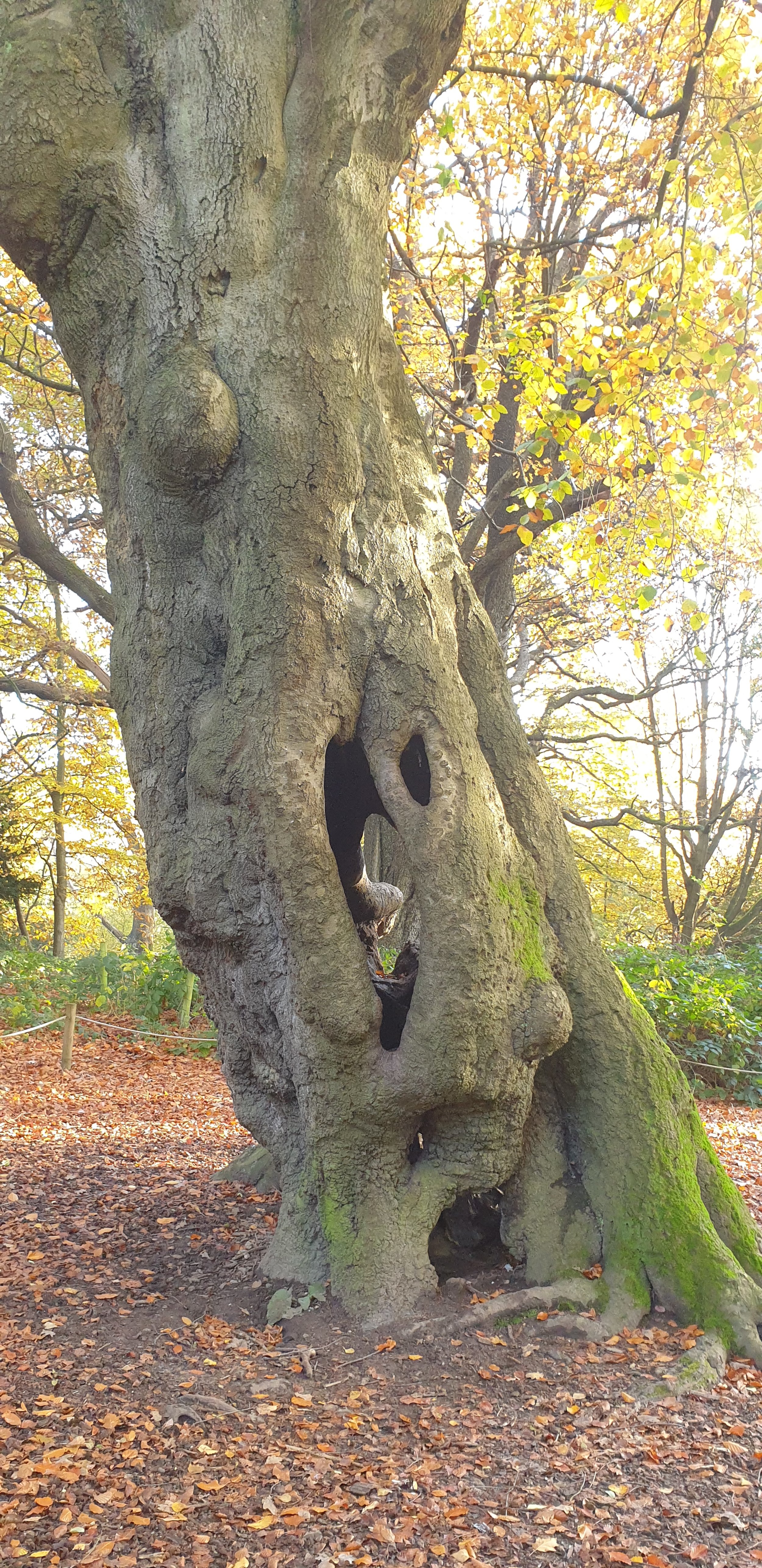Top Trees on the Heath
It’s National Tree Week this week- a celebration of trees and their importance, particularly in cities. We have many great trees to celebrate on Hampstead Heath, including around 450 old veterans. With the autumn leaf fall, the form of the trees becomes more apparent, so this is a great time to admire them. We like to include some of our special trees on our walks and talks, here are some of our favourites:
The windowed trunk of the Hollow Beech.
Hollow Beech
Perhaps the most famous tree on the Heath, hailed as ‘The Queen of the Woods’ and as one of the Great Trees of London, the Hollow Beech casts a fantastical figure near the Vale of Health. Having naturally hollowed through the action of bacteria and fungi over the past century or so, you can now see straight through the tree from the right angle, and people in the past have clambered inside. The record is 15 people inside the trunk but this must have been quite a stack and a squeeze!
Being such a popular attraction for playful children and adults alike does raise concern for the tree’s health. Root compaction from so much footfall around the trunk can damage this magnificent tree’s life support system, so a rope fence now encourages people to admire it from a respectful distance. Work has been done to aerate and fertilise the soil around the tree, as well as pruning it to prevent storm damage so this magnificent specimen can thrive and be admired by future generations.
The Vale Wild Service trees resplendent in autumn colour.
Vale Wild Service Trees
Often going underappreciated behind the Hollow Beech are a pair of veteran Wild Service Trees. These trees are an indicator of ancient woodland or hedgerows, so are scarce across the UK, especially in London and veteran specimens are exceptional. The two trees have been braced together to prevent them from toppling. There are only 19 mature wild service trees across the Heath, 9 of which are on the Kenwood Estate. Although these twin trees look like a single plant, they flower at slightly different times with white spring blossom. Their orange autumn berries were historically used in brewing. Another name for Wild Service is the Chequers tree, and this may lend its name to the many pubs called ‘The Chequers’ in Britain.
Pitt’s Arch Beech in winter.
Pitt’s Arch Beech
This veteran Beech tree is impressive in itself but made more famous by its’ association with the landmark it leans upon. What now appears to be a fairytale archway is the former entrance to the walled garden of William Pitt the Elder, British Prime Minister from 1766-1768. It was built along with a mansion house in the 1760’s, though the house is now demolished.
Thanks to the Beech, the archway also appears to be on borrowed time as the trunk is slowly pushing it down. However, the tree is much too impressive to lose too, so a compromise has been made by bracing the arch. Looking closely at the beech, you can see it has formed its own natural braces to keep itself together, as some of its branches have fused into its main trunks- a process called inosculation.
Two Tree Hill
Two Tree Hill
These two veteran Sessile Oaks, known as ‘Two Tree Hill’ are great survivors. The undulating landscape around them, known as Sandy Heath, is the result of extensively quarrying during the 19th and early 20th centuries. The sand and gravel extracted here was used to fill sandbags during both World Wars and utilized during the construction of the Midland Railway. The secondary woodland that now surrounds Two Tree Hill has grown up since the quarrying ceased in the early twentieth century. In 2006 some of the surrounding vegetation was reduced allow more sunlight to reach the trees. This involved whole tree removal as well as a high clearance of neighbouring trees – known as halo thinning. The mound is now fenced to prevent too much root compaction.
You can find out more about these trees and others on the Heath in the Hampstead Heath Veteran Tree Trail, and pop into our Nature Interpretation Centre to pick up our Ten Trees to See guide or download it HERE. You can also check our events page for tree-related walks and talks.




